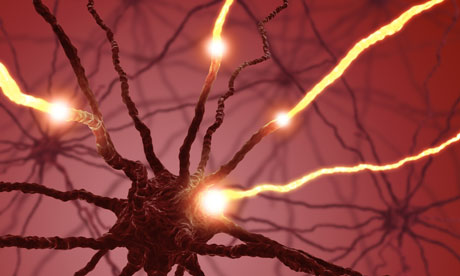Medical science moves too slowly for some, in part because the Food and Drug Administration's job is to carefully, methodically regulate the pace.
But once in a while, even the FDA makes an exception to its own rules. Sometimes it takes just one little girl.

"The FDA is all about science, not emotion," said Dr. Jeff Downing, a family-practice physician from Oviedo. "I get that. The government doesn't want wild procedures going on without science behind them. But waiting is tough because we don't know how quickly this will grow."
The "this" he refers to is his 5-year-old daughter's deadly brain tumor.
Diagnosed in January with diffuse intrinsic pontine glioma (DIPG), Caitlin Downing is one of about 200 children in the United States each year who gets this type of cancerous brain tumor. Because these growths wind around the brainstem, they cannot be surgically removed.
They are 100 percent fatal; 98 percent of children die within two years of their diagnosis.
Dr. Mark Souweidane, a pediatric neurosurgeon at Memorial Sloan-Kettering Cancer Center in New York, has devoted much of his 17-year career to finding a cure for DIPG.
On May 1, Caitlin became the first person to take part in a phase one clinical trial for which he had just received FDA approval.
The experimental treatment involved opening the skull to create a window onto the tumor site, then delivering a cone of enhanced radiation directly to the area. This "cone of death" emits radiation laced with small molecules that seek out the tumor tissue, attach to it and kill it.
"We get a high concentration where we want it," Souweidane said.
Initial results were encouraging. A follow-up MRI of Caitlin's brain showed that the tumor tissue in the treatment area was dead.
"But the cone of death didn't get the whole tumor," said Downing, whose family practice is in Casselberry.
By September, medical scans showed the tumor was growing back.
Because Caitlin did so well with the first round of treatment, her parents wanted the procedure repeated. That, however, would require special FDA approval.
"The physicians we worked with all said, 'We'll submit the paperwork, but don't expect this is something we'll get,'" said Denise Downing, Caitlin's mother.
So, they put in their plea to the FDA, knowing that the words "government" and "fast" don't usually occur together.
Yet in a move that stunned everyone, the FDA responded quickly with a go-ahead, a one-time, "off-study" approval that fell under the murky heading of "compassionate use."
Those who qualify must submit proof that they have life-threatening conditions, no other treatment options and a good argument that they might benefit, said Stephanie Yao, FDA spokeswoman.
"If the doctors thought it was a good idea, and the parents wanted the treatment, they said we could go ahead," said Denise Downing. "It was really a David and Goliath moment, and we won. They came through."
There was just one catch: Caitlin had to get the same dose she received during her first treatment. Since Souweidane treated Caitlin, he has doubled the dose in subsequent study patients, who have tolerated it well, and he plans to quadruple it.
However, as with all phase one trials, the goal of this study is to prove the safety of a new treatment and to figure out dosing. Subsequent trials aim for effectiveness. A double dose of this radiation treatment on a human brain has never been done. Giving Caitlin a larger second dose would be "unconscionable," said Souweidane.
But Caitlin's tumor has grown beyond the reach of the approved dose. So after conferring with their cancer experts, the Downings decided to try one more cancer weapon. Chemotherapy can get where the immuno-radiation therapy can't. The Downings hoped chemo would shrink the tumor and create a smaller target.
Caitlin has gone through two rounds. However, both Souweidane and the Downings believe that shrinking the tumor to the point where the second, FDA-approved surgery would be advisable is unlikely.
"We are so grateful that the FDA came back with an approval," said Denise Downing. "I just wish her tumor wasn't so big. We either need a bigger dose or a smaller target."
Meanwhile, Caitlin's symptoms are worsening. Her face is puffy on one side, and she's having more problems walking and seeing, her mom says.
"She knows her body's not doing what it used to," said Denise Downing. "She apologizes to me all day long, saying she's sorry she needs my help, sorry she's not getting better."
When Souweidane saw Caitlin and her mom in New York two weeks ago, he saw the same spirit that had won him over from the start. "She was still her spunky self, challenging us in thought-provoking ways," he said.
In fact, she had a question for him: "Can you get rid of the bump on my brain before I go to heaven?" she asked.
Denise Downing says she has no doubt that Souweidane and his team are on the right track. "I believe in everything this man is doing," she said. "He probably has a cure. I had hoped that our daughter could live long enough to get that cure. But that's not going to happen."
Regardless, "Caitlin is a pioneer," Souweidane said. "She has advanced science in important ways. She has not gone through this for nothing.
That said, he added, "If I could save one child's life, it would be hers."




 The white and gray matter of the brain are important in memory and thought
The white and gray matter of the brain are important in memory and thought